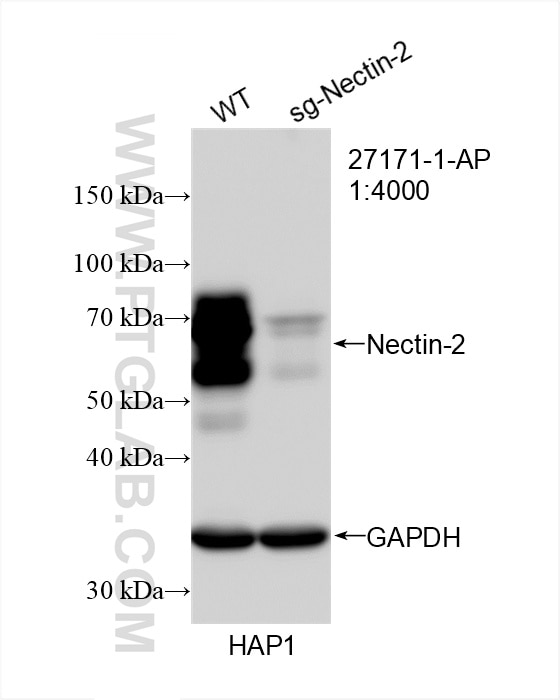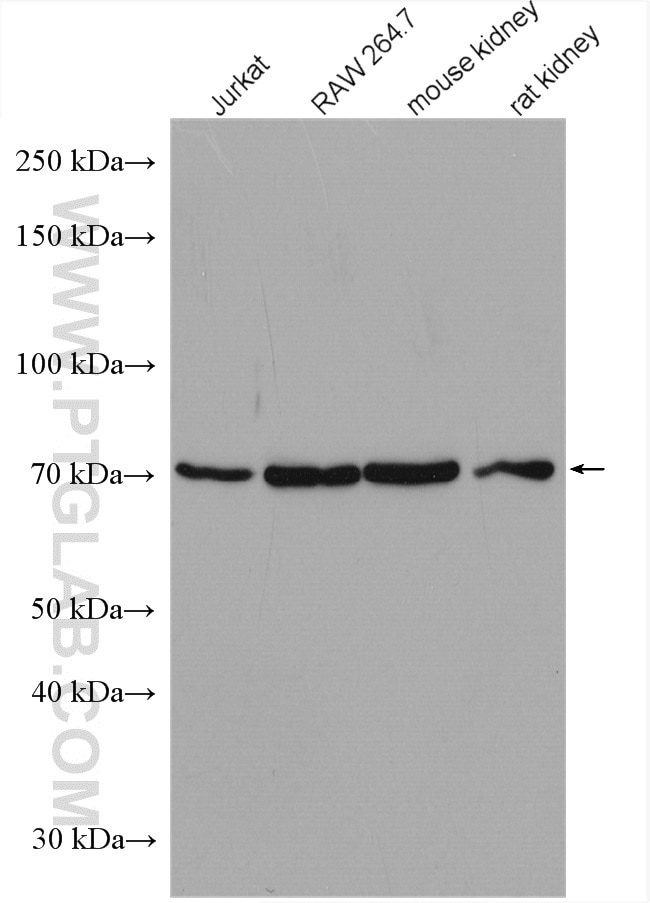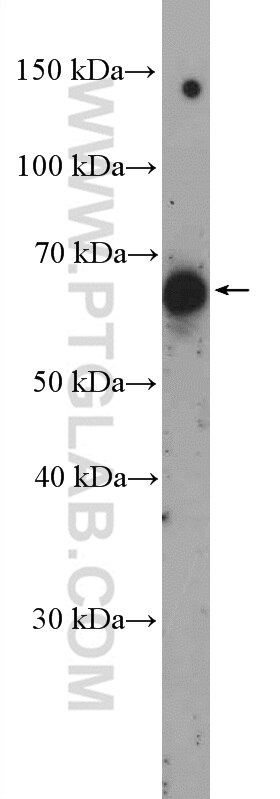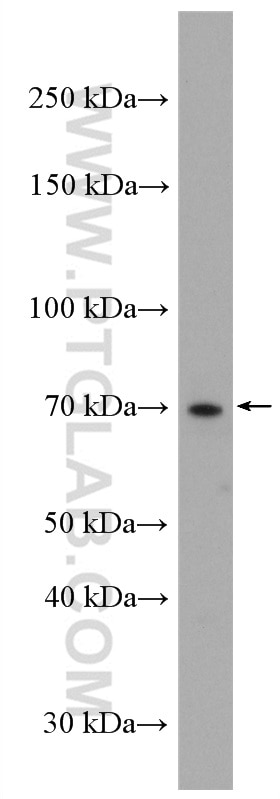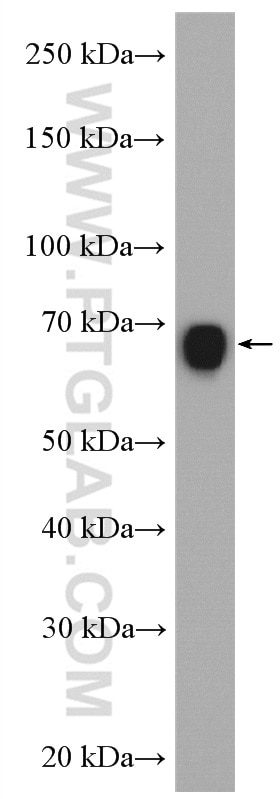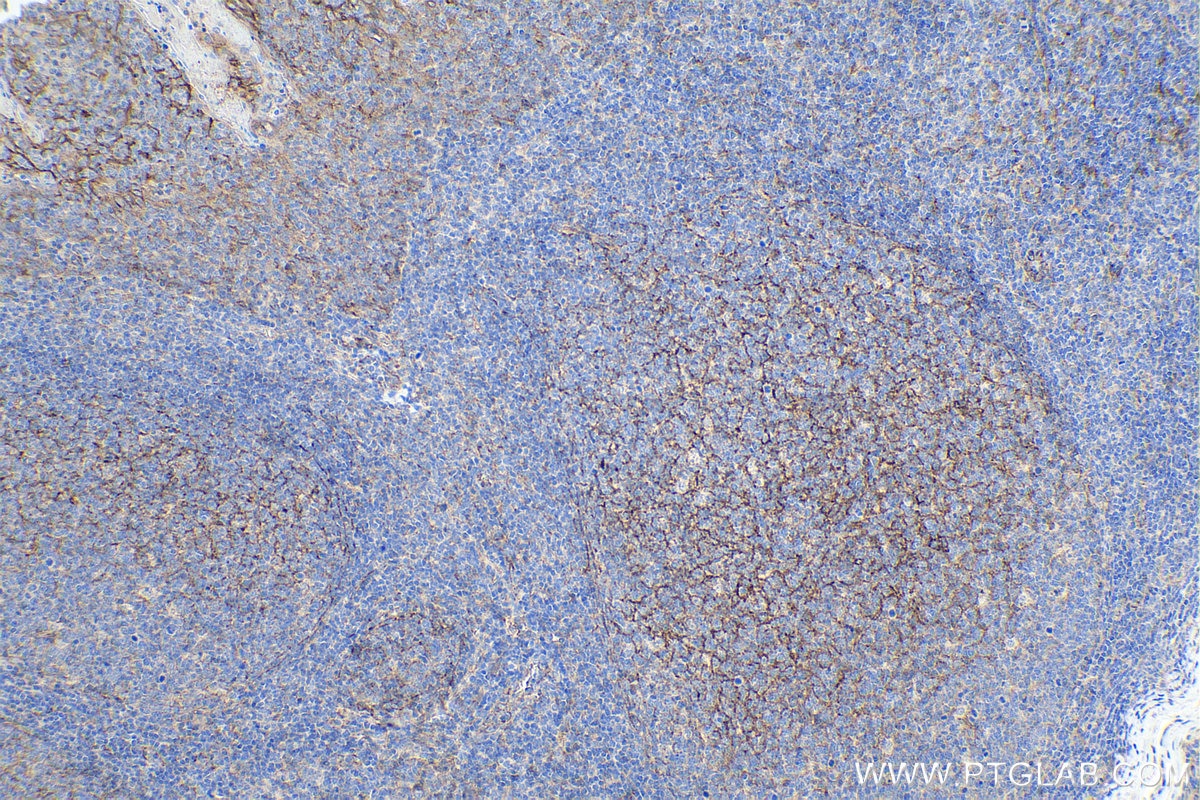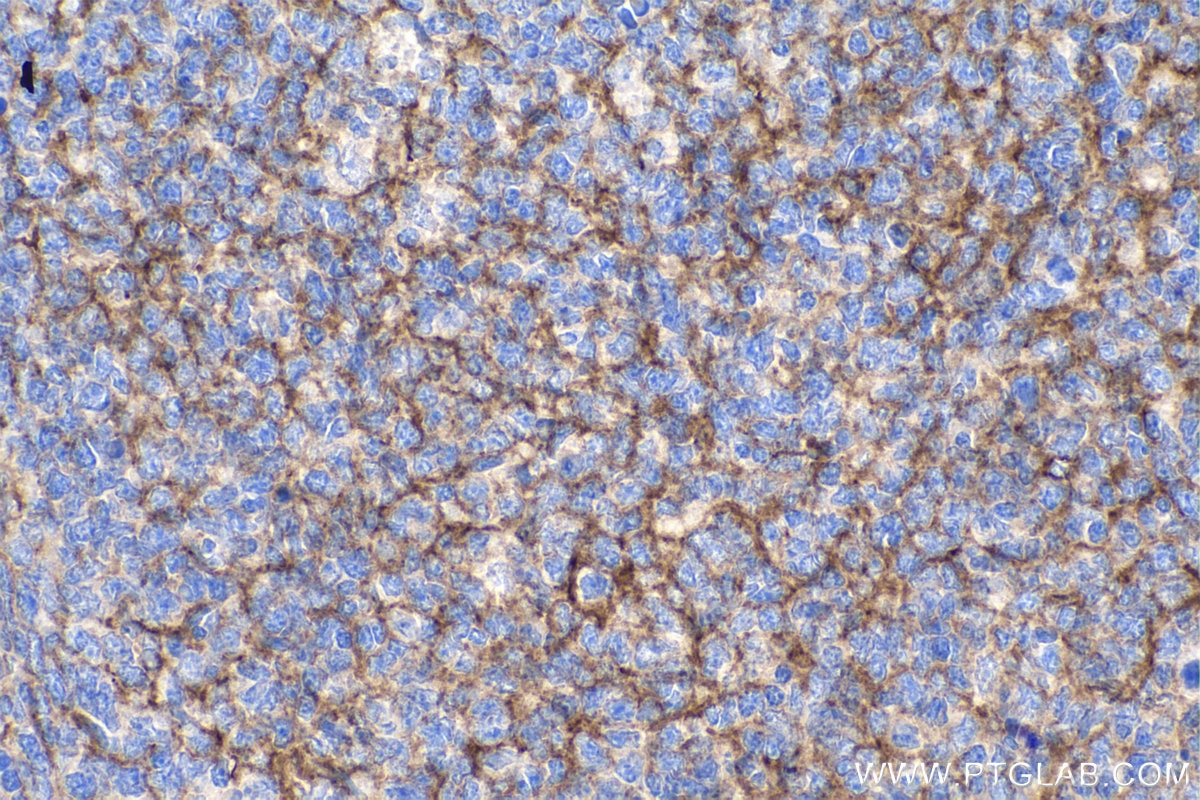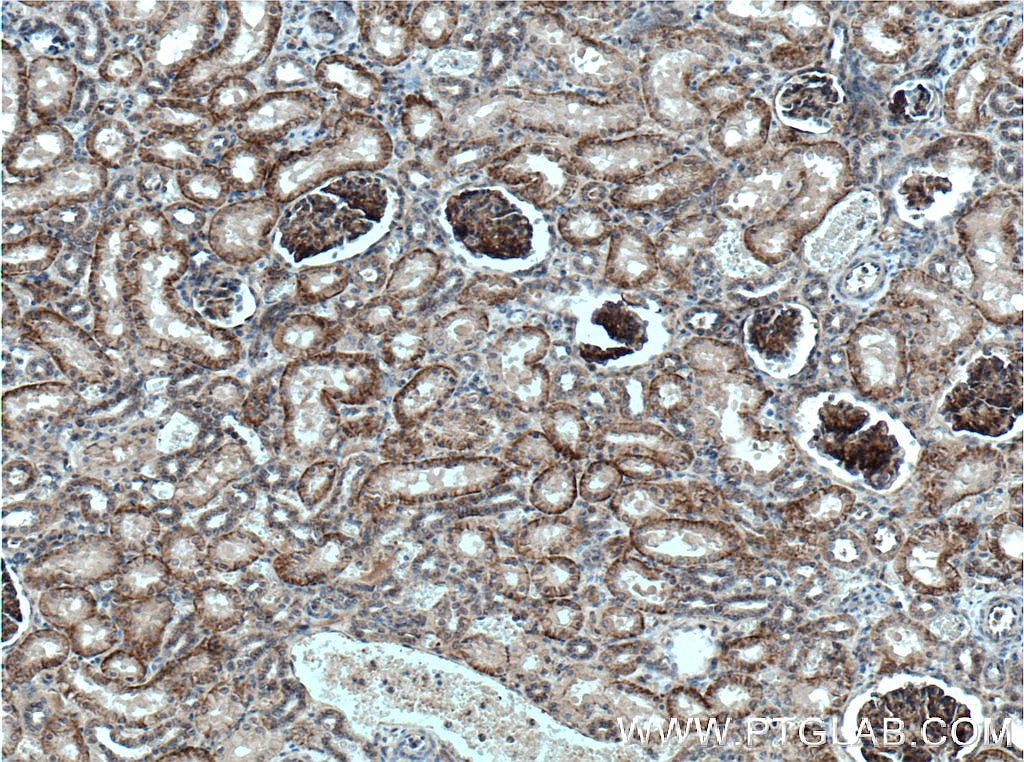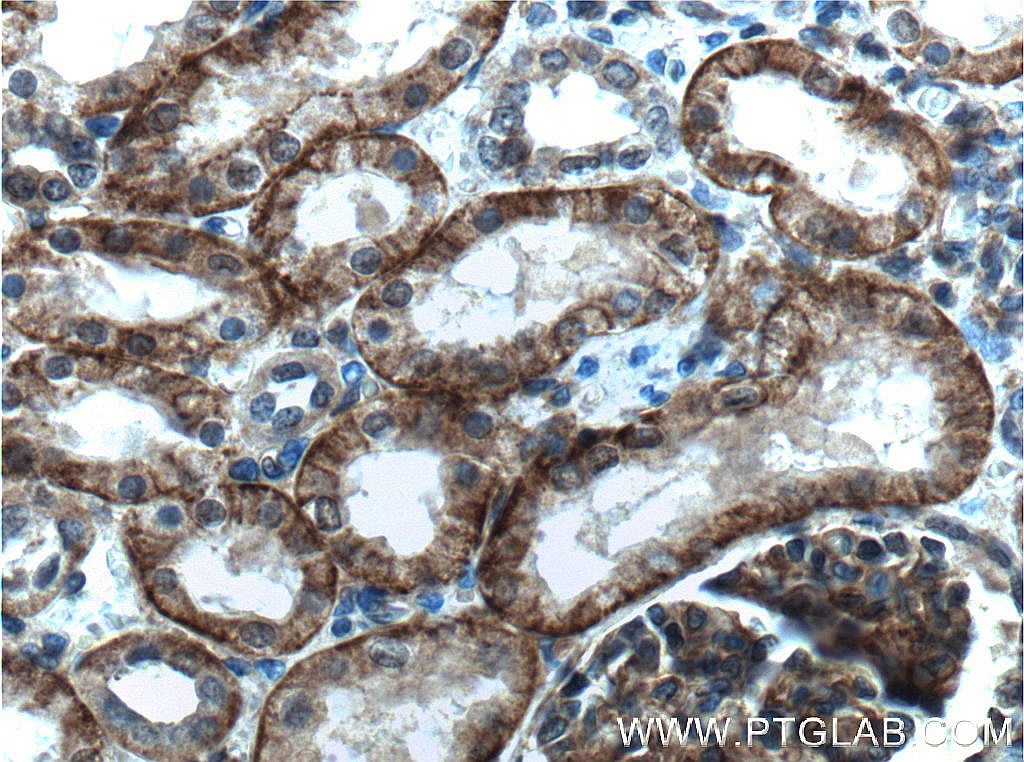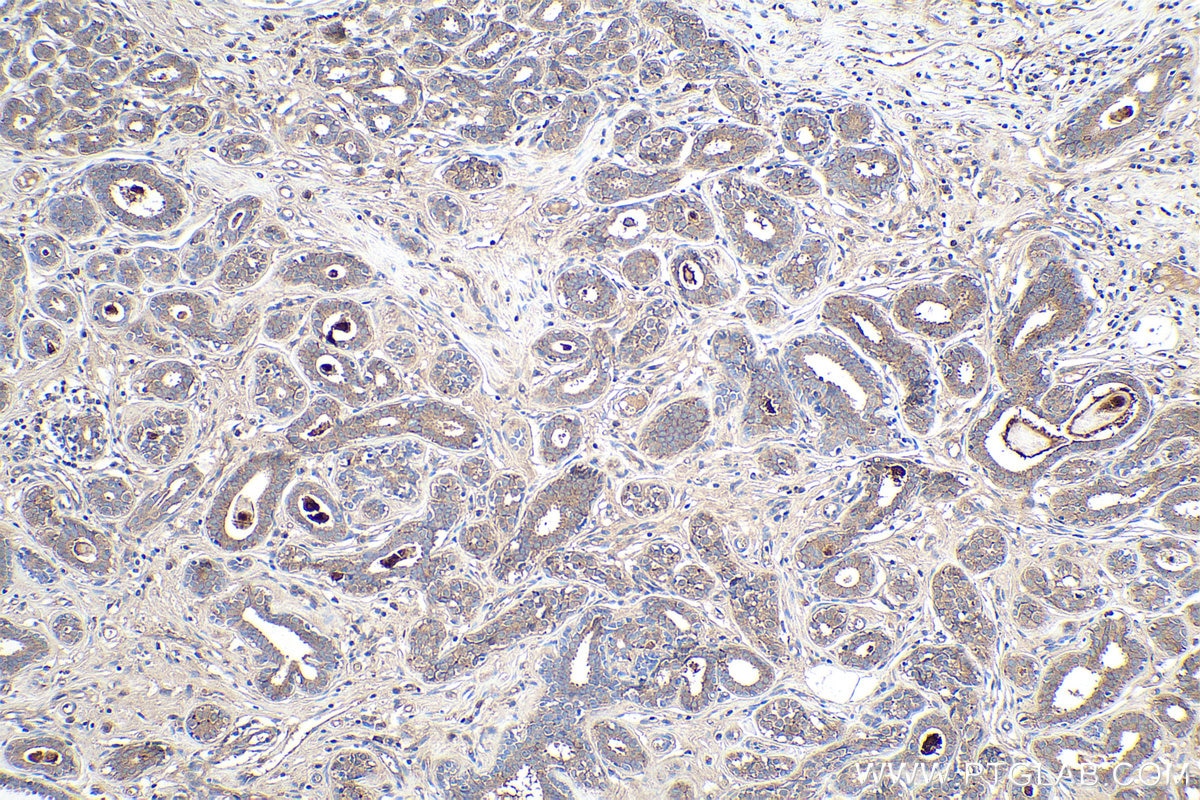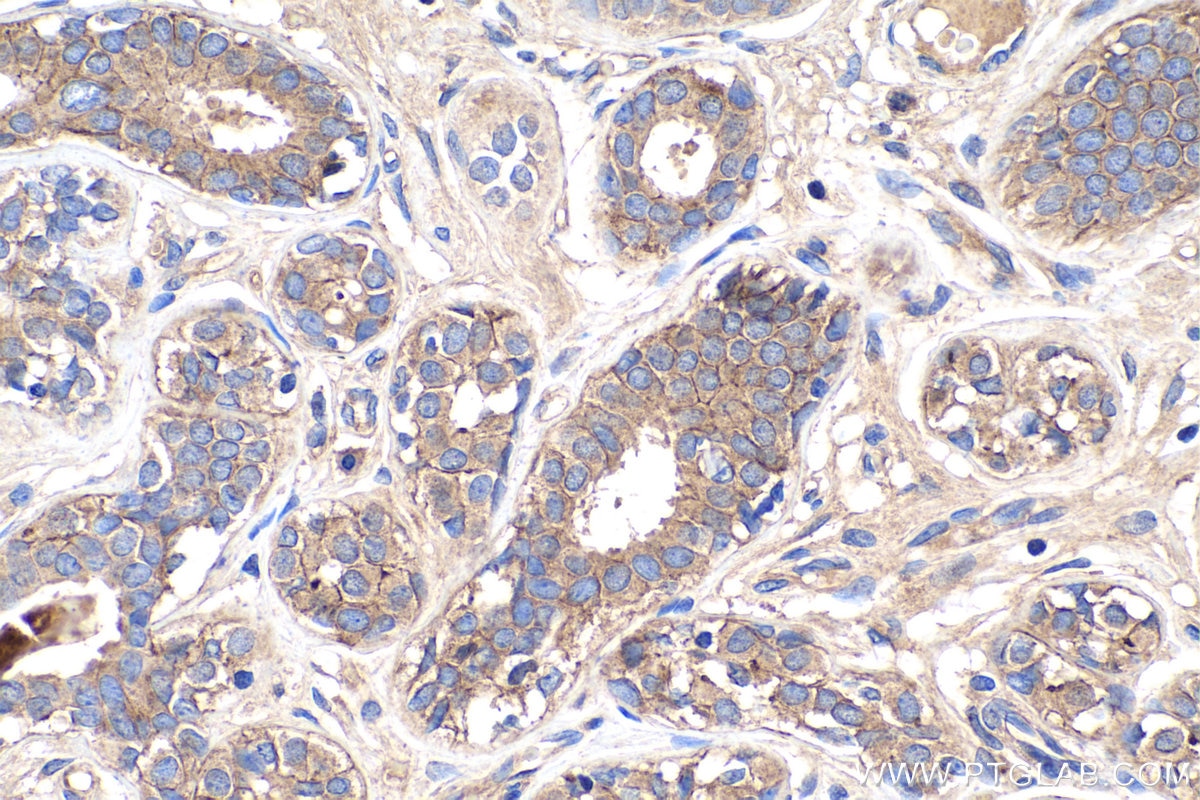Tested Applications
| Positive WB detected in | rat kidney tissue, HAP1 cells, Jurkat cells, mouse kidney tissue, RAW 264.7 cells |
| Positive IHC detected in | human tonsillitis tissue, human kidney tissue, human breast cancer tissue Note: suggested antigen retrieval with TE buffer pH 9.0; (*) Alternatively, antigen retrieval may be performed with citrate buffer pH 6.0 |
Recommended dilution
| Application | Dilution |
|---|---|
| Western Blot (WB) | WB : 1:1000-1:3000 |
| Immunohistochemistry (IHC) | IHC : 1:500-1:2000 |
| It is recommended that this reagent should be titrated in each testing system to obtain optimal results. | |
| Sample-dependent, Check data in validation data gallery. | |
Published Applications
| WB | See 3 publications below |
| IHC | See 3 publications below |
| IF | See 3 publications below |
Product Information
27171-1-AP targets Nectin-2/CD112 in WB, IHC, IF, ELISA applications and shows reactivity with human, mouse, rat samples.
| Tested Reactivity | human, mouse, rat |
| Cited Reactivity | human, mouse, rat |
| Host / Isotype | Rabbit / IgG |
| Class | Polyclonal |
| Type | Antibody |
| Immunogen | Nectin-2/CD112 fusion protein Ag26040 Predict reactive species |
| Full Name | poliovirus receptor-related 2 (herpesvirus entry mediator B) |
| Calculated Molecular Weight | 58 kDa |
| Observed Molecular Weight | 60-70 kDa |
| GenBank Accession Number | BC003091 |
| Gene Symbol | Nectin-2/CD112 |
| Gene ID (NCBI) | 5819 |
| RRID | AB_2880784 |
| Conjugate | Unconjugated |
| Form | Liquid |
| Purification Method | Antigen affinity purification |
| UNIPROT ID | Q92692 |
| Storage Buffer | PBS with 0.02% sodium azide and 50% glycerol, pH 7.3. |
| Storage Conditions | Store at -20°C. Stable for one year after shipment. Aliquoting is unnecessary for -20oC storage. 20ul sizes contain 0.1% BSA. |
Background Information
Nectin 2, also named as PVRL2, CD112, HVEB, PRR2 and PVRR2, is an adhesion molecule widely expressed in cell lines of different lineages, including hematopoietic, neuronal, endothelial and epithelial cells. CD112 belongs to a new family of immunoglobulin-like molecules that includes four members (CD111, CD112, PRR3 and CD155) sharing an ectodomain made of three Ig domains, of V and C types. CD112 is expressed in the myelo-monocytic and megakaryocytic hematopoietic lineages and the function in hematopoiesis is currently unknown. CD112 is an intercellular homophilic adhesion. CD112 localizes specifically at adherents junctions via its cytoplasmic interaction with the scaffold F-actin binding protein afadin. Disruption of the murine CD112 gene leads to infertility of male mice with morphologically aberrant spermatozoa. CD112 mediates entry of some alphaherpesvirus mutants (also named HveB) via its V domain. CD112 is involved in cell to cell spreading of viruses.
Protocols
| Product Specific Protocols | |
|---|---|
| WB protocol for Nectin-2/CD112 antibody 27171-1-AP | Download protocol |
| IHC protocol for Nectin-2/CD112 antibody 27171-1-AP | Download protocol |
| Standard Protocols | |
|---|---|
| Click here to view our Standard Protocols |
Publications
| Species | Application | Title |
|---|---|---|
Mucosal Immunol Alpha-hemolysin of uropathogenic Escherichia coli induces GM-CSF-mediated acute kidney injury. | ||
J Transl Int Med Lipid-related protein NECTIN2 is an important marker in the progression of carotid atherosclerosis: An intersection of clinical and basic studies. | ||
iScience Proteomic and single-cell landscape reveals novel pathogenic mechanisms of HBV-infected intrahepatic cholangiocarcinoma | ||
Sci Rep Single-cell RNA sequencing unveils tumor heterogeneity and immune microenvironment between subungual and plantar melanoma | ||
Cancer Lett Histone Lactylation Dynamics: Unlocking the Triad of Metabolism, Epigenetics, and Immune Regulation in Metastatic Cascade of Pancreatic Cancer | ||
Neurosci Bull Dorsal CA1 NECTIN3 Reduction Mediates Early-Life Stress-Induced Object Recognition Memory Deficits in Adolescent Female Mice |
